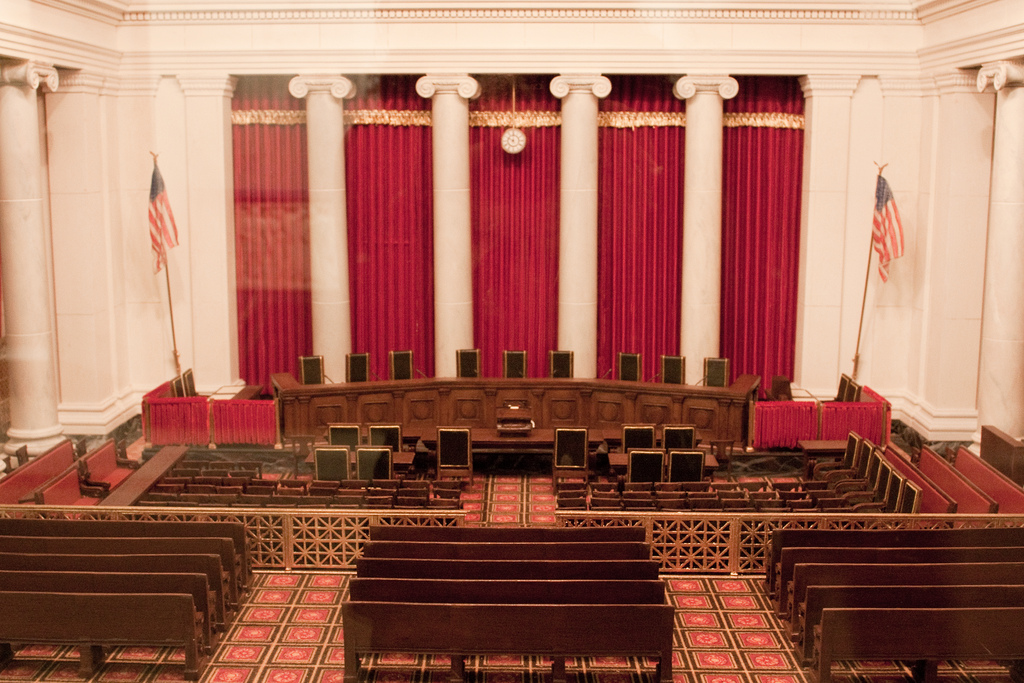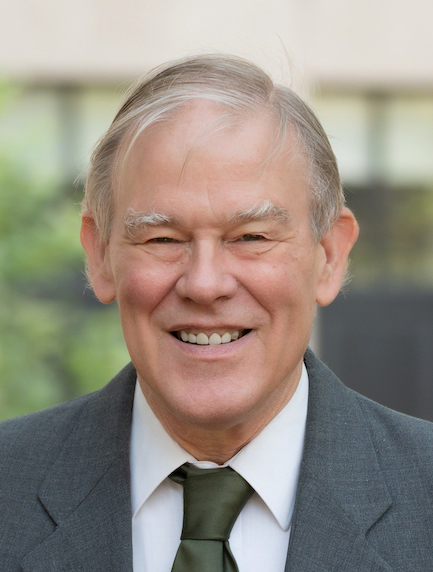High profile lawsuits have attacked religious liberty in recent years, but the federal bureaucracy is another line of attack. The Supreme Court’s Loper Bright v. Raimondo (2024) decision should have an impact on this, however. In this decision, the Supreme Court overturned the earlier Chevron v. Natural Resources Defense Council, Inc. (1984) decision, which instructed courts to give deference (commonly referred to as “Chevron deference”) to regulatory agencies where there is ambiguity in statutes.
The need to overturn the Chevron decision was discussed by a panel at a Faith and Law forum on Capitol Hill on September 13. The panel took the implementation by the Equal Employment Opportunity Commission of the Pregnant Workers’ Fairness Act to establish an abortion mandate as an example of the problem of regulatory overreach exacerbated by Chevron deference.
The panel included Paul J. Ray of the Heritage Foundation, Rachel Morrison of the Ethics and Public Policy Center, and Laura Wolk Slavis of the Becket Fund for Religious Liberty, and was moderated by Amy Vitale, also of the Becket Fund.
Congressional Delegation of Power and Chevron Deference
Vitale remarked that although the general public usually isn’t interested in regulatory issues, these issues are still quite important for religious liberty. There are three stages in the lifecycle of a federal regulation, she said: first, the legislative proposal and enactment (contents, language, etc.), secondly, the regulatory proposal by an executive agency and public comments thereon, and thirdly, the lived reality. Conflict in the lived reality may result in litigation.
She observed that the Supreme Court said in the Loper Bright decision that Chevron deference is “unworkable and fundamentally misguided.” Courts had to decide between “ignoring court precedent or undermining the limits on Congressional delegation.”
Paul Ray explained the Chevron decision as having created the “Chevron two-step” for judicial review of regulatory cases – 1) Is the statutory text clear? If so, there is no further review – 2) If the text is unclear, then the court asks if the agency’s interpretation is “reasonable,” regardless of whether or not the court thinks it is “best.” Comparison of cases before and after the Chevron decision shows that courts were more likely to uphold a challenged regulation after the Chevron decision than before. The distance between “reasonable” and “best” was an area of agency discretion which had not existed before. The jurisprudential justification for the Chevron doctrine changed over time, Ray said. Ultimately the Supreme Court held that by using vague language in delegating regulatory authority to agencies, Congress was signaling its intent that agencies interpret laws since they have greater expertise than courts. However, in “public policy debates” Chevron was defended as a doctrine to prevent courts from overreaching their proper authority by reading their preferences into law.
The Supreme Court overruled the Chevron decision on the basis of the Administrative Procedure Act of 1946. It held that the courts should judge whether federal regulations correctly implement laws passed by Congress. Nevertheless, Ray observed, Loper Bright does not alter “open-ended” delegations – where the law says an agency should follow a standard of indeterminate meaning (e.g., “in the public interest”). Such standards are rhetorical, with no real meaning. Agencies may effectively regulate without regard to them.
Part of the rationale for the Chevron decision has been undermined by the rise of textualism (which focuses on the plain meaning of legal statutes). Textualism has succeeded to a significant degree in limiting judicial discretion. On the other hand, since 1984 “agencies are more likely themselves to engage in aggressive power grabs.” Ray attributed this to increased Presidential power over agencies since the Clinton Administration and public expectations that executive power will be used to accomplish what existing law cannot by itself accomplish.
The Problem of Regulatory Overreach
Rachel Morrison discussed the Pregnant Workers Fairness Act, and the way in which that law was twisted to advance an agenda that it was never intended to advance, namely that of abortion. The point in the law on which there was bi-partisan agreement was to help pregnant women in the workplace by requiring “reasonable accommodations” which would not be an “undue burden” on employers. This was something existing antidiscrimination law did not accomplish.
But there was concern that the Equal Employment Opportunity Commission would interpret the law to require abortion accommodations. These concerns resulted in the proposal in the House of Representatives for a religious accommodation in the PWFA. Legislators incorporated the religious accommodations provision of Title VII of the Civil Rights Act of 1964 in the PWFA. Against this, she said, it was claimed the religious protection language taken from Title VII only covered claims of religious discrimination, not conscience claims against abortion arising from religious commitments. Although the EEOC had a long-standing interpretation of the Pregnancy Discrimination Act to say that it prohibited discrimination against abortion, left-of-center legislators insisted that the proposed PWFA had nothing to do with abortion. Those who raised abortion concerns were said to be unconcerned about women.
But this, Morrison said, was a case of “nod-nod, wink-wink.” Everyone knew what the EEOC would do with the law, even though the legislation did not mention abortion. The EEOC has a history of pushing the law “where it wants it to be.” But the agency “does not have substantive rulemaking authority under Title VII” or under laws such as the PWFA insofar as they amend Title VII. EEOC guidance in these cases is not “legally binding.” But the PWFA itself does give the EEOC rulemaking authority, so that based on the PWFA, it can make “regulations that bind employers.”
Morrison observed that in the regulation EEOC did promulgate based on its interpretation of the PWFA, both contraception and abortion must be accommodated. Thus, in the case of contraception, the PWFA is applied to some women who have never been pregnant and may never be pregnant. She noted that in commenting on the proposed regulation, one Democratic senator who had insisted on the floor of the Senate that the PWFA did not cover abortion later agreed with the EEOC’s proposed regulation making the PWFA cover abortion.
Litigating against Regulatory Overreach
Laura Wolk Slavis said that legislators must be careful when they enact a law of the possible ways a “bad actor agency” might interpret it, issuing regulations that go beyond the intent of the legislation. She said that once a rule is promulgated, organizations whose consciences are threatened by the rule must “move very fast,” because as soon as the rule “goes into effect,” they will immediately have the choice of facing the penalties of non-compliance with the rule or violation of their consciences. In the case of abortion, a rule may require violation of “millennia old” religious beliefs. The injection that the Becket Fund sought against the EEOC regulation said that abortion has nothing to do with pregnancy or childbirth, “it is the antithesis of those things.” Abortion is not a “condition,” she said, “it is a procedure.” It is a procedure intended “to terminate the life of the unborn child.” Additionally, the EEOC rule violated the “major questions doctrine.” This doctrine says that a regulation involving major issues of public controversy must have “exceedingly clear” statutory justification, not merely the judgment of the regulatory agency. But the PWFA had no language at all referring to abortion.
Another area of regulatory overreach in EEOC’s interpretation of the PWFA, Slavis said, was its interpretation of the religious exemption taken from Title VII of the Civil Rights Act. What the statutory language actually says is that any action an employer takes on a religious basis is exempt from the PWFA. “Religion” is understood to mean what it means in Title VII, which is “all aspects of belief as well as observance or practice.” This means that “if an employer takes an action based on an individual’s beliefs, observance, or practice, that claim is exempt, it’s completely uncovered by the law.” Thus there is no need to accommodate abortion. But the EEOC interpreted the law in the “very narrow” sense that an employee may not bring an antidiscrimination claim on a religious basis. Yet the PWFA is not an antidiscrimination law, despite its religious accommodation language having taken Title VII’s language but has only to do with accommodating pregnant workers.
The judge who issued an injunction the day the regulation was to go into effect said that EEOC’s proposed regulation was a classic case of “regulatory overreach.” He agreed that abortion is a “procedure,” not a “condition,” and thus not covered by the PWFA (from which employers have a religious exemption in any case). He recognized that abortion was a highly controversial issue, not to be mandated from vague statutes. The PWFA’s history highlights, Slavis said, that “cautionary tales” about what an executive agency can do with a law show that laws should be carefully written.
Commenting on the burden of litigation, Vitale observed that the Becket Fund has been with the Little Sisters of the Poor in court after more than a decade. The Little Sisters suffered from the contraceptive/abortifacient mandate based on a bureaucratic interpretation of the Affordable Care Act (Obamacare). This shows that the federal government is an “absolute Goliath” that religious ministries may have to engage.
Ray said that there currently is a refrain that Congress should pass laws with general rules, which agencies with expertise in the relevant areas should then interpret. But he asked if Congress couldn’t inquire of agencies what they know before it formulates law. Executive agencies do not want statutes that are difficult to administer, and so they have “pretty strong incentives” to get back to legislators with questions about proposed legislation. Morrison said that agency heads can be called to account in Congressional hearings about laws that they implement. Slavis added that comments to a proposed rule are important. For the proposed EEOC regulation mandating abortion accommodation, 54,000 comments were submitted saying that the proposed regulation would “infringe religious liberty.” Comments can be useful in showing how an agency has departed from the text of a law.
Conclusion
Laws will continue to require federal agencies to make them apply to the situations of real life. Staffed by personnel who are interested in and believe in the area of public life that their agency addresses and are reasonably likely to feel that the government has a somewhat messianic role to play in the life of the nation, they may overstep the bounds of their agency’s authority. The Loper Bright decision will guard against this, with agencies aware that they face a more conservative judiciary both in the legal rules it will apply and the make-up of its judges. No particular arrangement of laws and institutions will guarantee religious liberty but overturning the Chevron decision will certainly help.






Comment by Tim on September 27, 2024 at 6:56 am
Nice job shoehorning abortion in, but it’s a fairly dishonest explanation of why Chevron was important and why conservatives wanted it gone.
We’ve left the era where there’s any legitimate debate about climate change, or forever chemicals, or other pollutants. Regulatory agencies acting in good faith rightly want to take action to protect vulnerable people (part of our call as Christians too, no doubt) but by removing their authority to do so the Supreme Court has sent the ball back to its allies in Congress who will ensure that nothing is done to protect us.
Comment by Different Steve on September 27, 2024 at 9:39 am
Like the Secret Service protected Trump? Like they protected East Palestine, Ohio? Like they protect the border? The list of failures and harassment by unelected and often unaccountable bureaucrats goes on and on. Incidentally, climate change is not beyond legitimate debate. (That word “legitimate” is doing some heavy lifting there.) Aren’t the ice caps supposed to have melted by now? Major cities underwater? Haven’t global temps actually gone down in recent years? Notice they (and you) don’t call it global warming anymore. Besides which, given China and India have been ramping up their enormous carbon emissions, how is denying ourselves carbon based fuels supposed to make much difference? And how about those ridiculous electric car mandates, where they mandated the end of ice engines by 2025 or something, that’s just completely falling apart and/or starting to destroy the auto industry?
Comment by Different Steve on September 27, 2024 at 9:53 am
MSM Journos Inadvertently Reveal Shocking Truth About Global Warming
https://www.zerohedge.com/weather/msm-journos-inadvertently-reveal-shocking-truth-about-global-warming
Comment by George on September 27, 2024 at 11:36 am
Thank you different Steve. I can’t add anything that would enhance what you laid out for us except for maybe these words, “we are from the government and we are here to help”.
Comment by MikeB on September 27, 2024 at 2:22 pm
Tim,
Yet again the church of Tim has proven itself to be a statist dictatorship that demands the complete adherence of the state to the flippant beliefs of Tim.
Christ said “My kingdom is not of this world”
Tim said “The government needs to force my beliefs on traditional Christians”